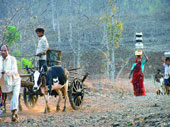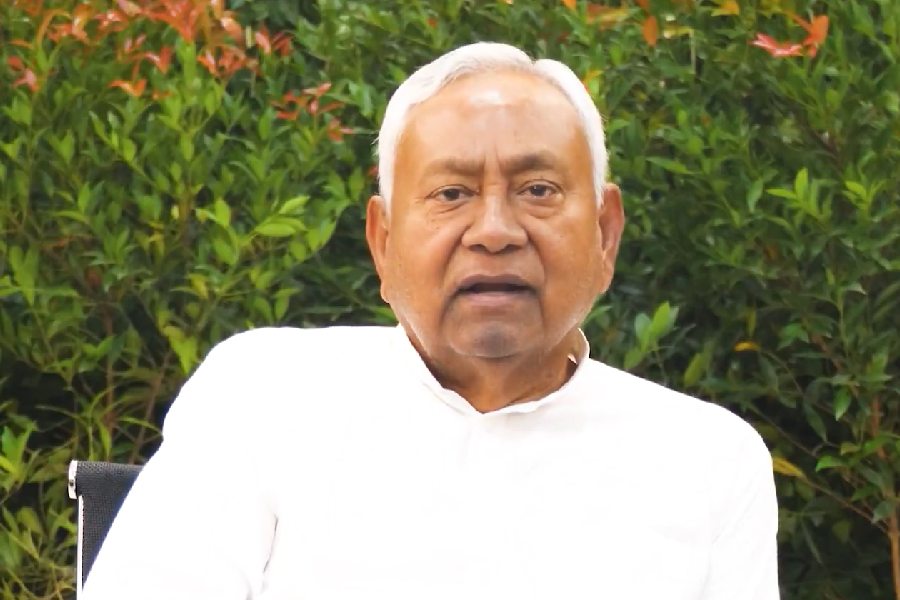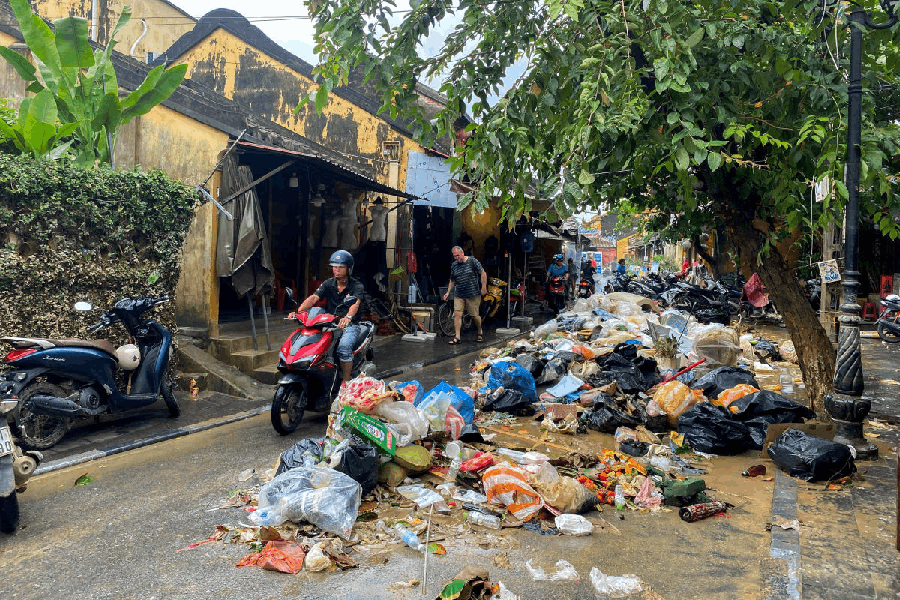 |
Tanabai Chaudhari sits brooding outside her mud hut in Papal village in the Yevatmal district of Maharashtra. Her cotton crop ? once referred to as white gold ? has failed in the market. She had taken a bank loan of Rs 15,000, and the interest on it is piling up. And if that isn’t bad enough, no other bank will entertain a loan request from her, until she furnishes a No Objection Certificate from the bank she owes money to.
In eastern Vidarbha ? the killing fields of Maharashtra ? Chaudhari’s story has, by now, lost its edge. Banks had been asked to step in with easier credit to save the villagers from the clutches of private moneylenders. But, today, to save face, countless farmers like Chaudhari simply creep into a moneylender’s hut ? never returning empty-handed ? even if it’s to their own eventual detriment.
.jpg) |
Chaudhari will have to pay Rs 500 as interest at the end of the year for every Rs 1,000 that she borrows. If she’s lucky, the overheads could cost her Rs 250 less. But perhaps she is better off than Dagdu, one of Wardha’s 62,000 loan defaulters. To repay a loan of Rs 40,000, Dagdu approached four moneylenders of his village, to keep his 50 acre farm alive.
Chaudhari’s story shows, quite simply, that the government’s agricultural credit delivery mechanism isn’t working. The central government allots huge sums of money to help farmers but a lot of the money doesn’t reach them.
Meanwhile, it’s been a fortnight since the Prime Minister announced a Rs 3,750-crore relief package for Vidarbha’s six suicide-hit, drought-prone districts. But the Prime Minister’s promised interest waiver of Rs 712 crore is yet to make its presence felt in the region. “We have not received any directive to waive interest on crop loans,” says R.L. Satputle, branch manager of Central Bank in Yevatmal, which has been designated as the lead bank in the district.
The district’s banks ? 93 branches of the 14 commercial banks, 23 branches of the Grameen Bank and 82 branches of the Central Co-operative Bank ? have, however, got a respite from the state government, which has granted Rs 51 crore to them to waive interest on crop loans taken up to November 30, 2005.
Satputle points out that the total crop loan available from the banks in Yevatmal ? where on an average a farmer borrows Rs 16,000 ? is Rs 252 crore. But agricultural credit, which includes loans for other expenses such as irrigation or purchase of farm implements, has doubled from 2003-2004 to reach Rs 313 crore.
.jpg) |
One snag. Most farmers don’t even know all this. Few, for instance, know anything about the loans and subsidies the government has announced. Not surprisingly, the schemes are conspicuous by their absence in Teegaon village in Wardha district. “Corrupt officials usually usurp the funds,” says Jayant Ingle, one of the few big farmers in Teegaon. The farmers hold that they never get to hear of what the government has in store for them.
And even when loans or subsidies do show up in the villages, they’re made scarce by powerful bodies such as the Panchayat Samiti, as Manoj Tayade, a member of the Samiti at Wardha’s Dahegaon village, testifies. Take the oilseed programme, launched by the state government in December last year. Under the package, the drought-hit districts have been allotted money ? Rs 30 lakh for Yevatmal ? for training farmers in more scientific ways of growing oilseeds such as groundnuts and soyabeans.
Farmers of the village, Tayade says, have no clue about the eight bags of groundnuts lying with the Samiti as part of the scheme, or a consignment of 66 bags of soyabean. “Agricultural officers give it to those Panchayat Samiti members whom they are close to,” says Tayade.
Under the same state package, the government has a subsidised cotton scheme for Yevatmal and the other districts. Yevatmal, with its population of 4.17 lakh farmers in 2,100 villages, has been allotted Rs 73 lakh under the scheme, mainly for training farmers in more viable ways of cotton cultivation. But, again, the budget allotted for training and distribution of seed samples is not something that everyone benefits from. “The farmers invited to these demonstrations are those whose yield is good,” says Vijay Mankar, a farmer and lecturer in Yevatmal’s Kalam village.
Moreover, these demonstrations take place on farms that are close to the main road ? as it works as an advertisement for seed manufacturing companies distributing the seed samples.
Clearly, the government’s writ gets lost in transit. In Kalam, farmers whose cotton crop was affected by what’s commonly referred to as the ‘cotton reddening disease’ received Rs 900 per hectare from the Rs 33-crore allotted to Yevatmal district. But Wardha’s Dahegaon village, Tayade says, was a classic case of corruption. “Many of those who received a compensation of Rs 1,500 (per hectare) were those whose crop was not affected by the disease,” he says.
Corruption is compounded by the lack of awareness about the new schemes. Mankar, for instance, had no idea that there was a fully subsidised Rs 1-crore horticultural plantation scheme. When he got to know of it and sought fruit saplings, Mankar was told that it was for the tribal population. Though non-tribals benefiting from schemes meant for tribals (by taking their thumb impression) is commonplace, Tayade holds that there are also instances of tribals selling electric motors and other equipment provided free of charge by the government.
Mankar, like many other villagers in Yevatmal, knows nothing about the Rs 75 lakh scheme for sugarcane development. If the government had asked him, Mankar would have said that it was a waste of an effort in a district which was replete with sick sugar mills, given that the water-guzzling nature of sugarcane had only two to three percent of its 9.5 lakh cultivable area irrigated. Some Rs 58 lakh has been allotted to oilseed, pulse and cereal programmes ? but Mankar knows nothing about this.
The government is aware of the gap in communication. Wardha’s collector E.Z. Khobragade plans to rectify the situation by sending his officers into the field to educate people about the various state schemes for farmers. Besides, for small measure, he also plans to revive the dormant Employment Guarantee Scheme (EGS) in the district.
But in Wardha, Vijay Jawandia, a senior leader of the Shetakari Sanghatana, a farmer’s political party, points out that the farmers don’t have the time to spare for labour under the EGS, as the cotton crop keeps them busy nine months a year. Moreover, the farms on which they have to work under the scheme are far from the village, he says.
Khobragade has his own take on the subject. “Farmers simply don’t want to work,” he complains. His remark would have been comic ? had the farmers’ story not been a tragedy.











